Crystal Red Shrimp typically breed every 30-45 days when provided with the right environment, including stable water parameters, optimal temperature, and ample food supply.
every 30-45 days when provided with the right environment, including stable water parameters, optimal temperature, and ample food supply.
The Intriguing Breeding Habits of Crystal Red Shrimp
Crystal Red Shrimp , or Caridina cantonensis, are a popular and colorful species of freshwater shrimp native to Southeast Asia. They are not only prized for their striking appearance but also for their fascinating breeding habits. In this article, we’ll explore how often Crystal Red Shrimp
, or Caridina cantonensis, are a popular and colorful species of freshwater shrimp native to Southeast Asia. They are not only prized for their striking appearance but also for their fascinating breeding habits. In this article, we’ll explore how often Crystal Red Shrimp breed, and the factors that influence their reproduction.
breed, and the factors that influence their reproduction.
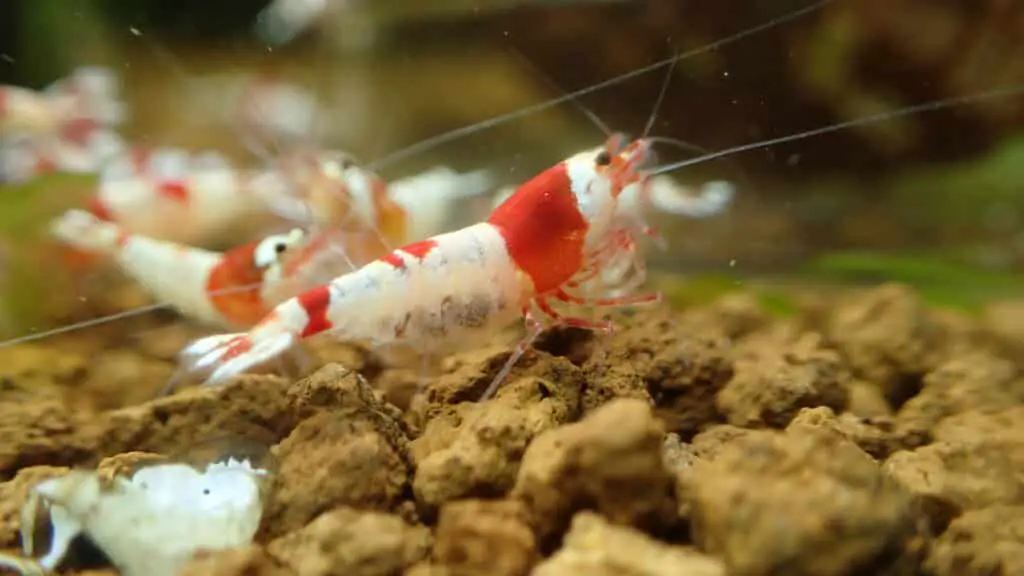
The Life Cycle of Crystal Red Shrimp
The life cycle of a Crystal Red consists of several stages, including egg, larval, juvenile, and adult stages. Understanding these stages can help dwarf shrimp enthusiasts better care for their pets and facilitate successful breeding.
enthusiasts better care for their pets and facilitate successful breeding.
Females carry fertilized eggs in their swimmerets (small, leg-like structures on the abdomen) for approximately 3 to 4 weeks, depending on water temperature and other environmental factors. During this time, the eggs gradually develop into tiny shrimp.
The juvenile stage lasts for about 2 to 3 months, during which the shrimplets grow rapidly and undergo several molts. Molting is an essential process in which the shrimp sheds its old exoskeleton and forms a new one to accommodate its growing body. Juvenile bee Shrimp display a less vibrant coloration
sheds its old exoskeleton and forms a new one to accommodate its growing body. Juvenile bee Shrimp display a less vibrant coloration than adults but gradually develop their distinct red and white patterns as they mature.
than adults but gradually develop their distinct red and white patterns as they mature.
Once the shrimp reach adulthood (at around 3 to 4 months of age), they become sexually mature and capable of breeding. Adult Bee Shrimp have a lifespan of 1 to 2 years, with females generally living slightly longer than males. During this stage, the dwarf shrimp continue to molt periodically to accommodate growth and maintain a healthy exoskeleton.
By understanding the life cycle of Crystal Red Shrimp, you can better cater to their needs at each stage and create a thriving environment for your shrimp population to grow and develop.
to grow and develop.
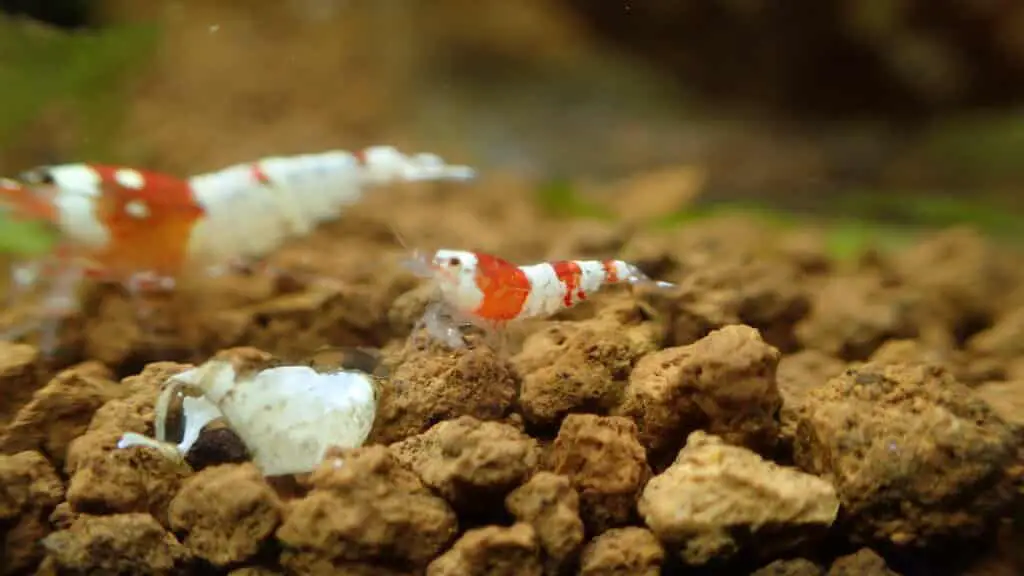
Sexual Maturity: When Do Crystal Red Shrimp Breed
Crystal Red Shrimp reach sexual maturity at around 3 to 4 months of age, but this can vary depending on various factors such as genetics, water conditions, and diet. Once the shrimp reach sexual maturity, they can breed and produce offspring.
Several factors can influence the age at which Bee Shrimp reach sexual maturity. Genetics is one of the most significant factors, with some lines maturing earlier than others. Water conditions, including pH, temperature, and water quality, can also affect the shrimp’s development and maturation rate. In addition, providing a balanced diet rich in protein, vitamins, and minerals can help support healthy growth and development.
You can identify sexually mature Crystal Red Shrimp by their distinct physical features. Adult females have a larger body size and a broader tail segment compared to males. They also have a rounded underbelly, while males have a slightly concave underbelly. Males have modified front legs called chelipeds, which they use to grasp females during mating.
Crystal Red Shrimp are prolific breeders, with females producing between 20 to 30 eggs per clutch. Males actively pursue females, and once they mate, the female carries the fertilized eggs until they hatch. To encourage breeding, it’s essential to provide the right environment, including stable water conditions, optimal temperature, and ample food supply.
Understanding when Crystal Red reach sexual maturity and the factors that affect their development can help dwarf shrimp enthusiasts create ideal conditions for their pets to thrive and breed successfully.
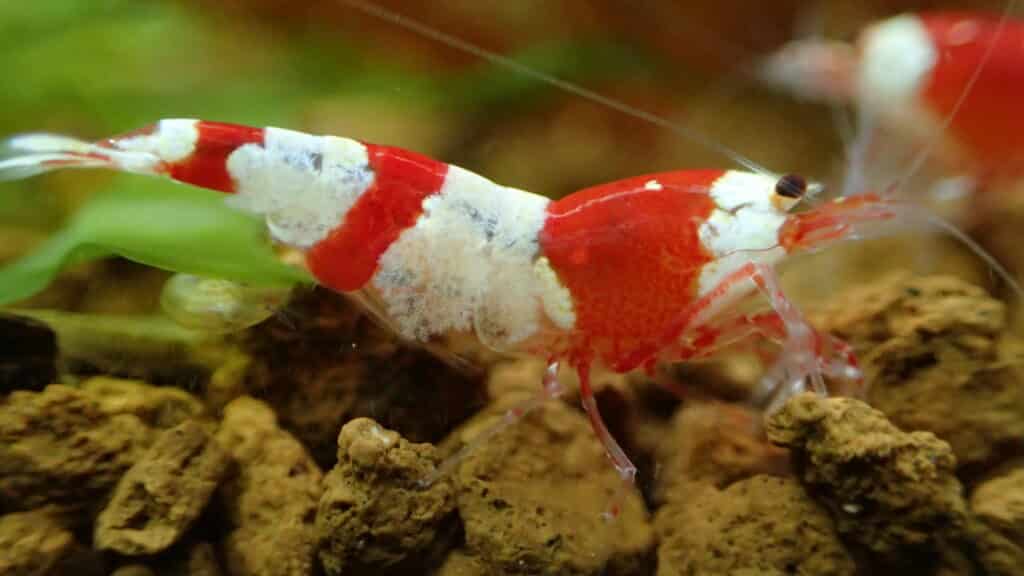
Ideal Water Parameters for Breeding Crystal Shrimp
Setting up a stable and appropriate environment is vital for the successful breeding of red bee shrimp. Factors such as pH, temperature, hardness, and mineral content play significant roles in the shrimp’s overall health, growth, and ability to reproduce. This guide presents the ideal water parameters for breeding Crystal Red Shrimp , along with a table for quick reference.
, along with a table for quick reference.
Table: Ideal Water Parameters for Crystal Red Shrimp Breeding
Breeding
| Parameter | Ideal Range | Importance |
|---|---|---|
| pH | 6.2 – 6.8 (slightly acidic) | Prevents stress, illness, and death; stable pH is crucial |
| Temperature | 72°F – 78°F (22°C – 26°C) | Minimizes health issues and supports breeding; avoid sudden fluctuations |
| Water Hardness | 4 – 6 dGH (70 – 100 ppm) | Promotes successful molting, breeding, and overall shrimp health |
| Mineral Content | Adequate calcium, magnesium, potassium | Supports proper growth, development, and molting; use shrimp mineral supplement if needed supplement if needed |
| Water Quality | Regular monitoring and maintenance | Prevents toxic build-up; maintain excellent water quality for breeding success |
To create the perfect breeding environment, it is essential to maintain the recommended pH levels. Crystal Red Shrimp thrive in slightly acidic water with a pH between 6.2 and 6.8. Ensuring stable pH levels is critical, as abrupt changes can stress the shrimp, leading to sickness and even death.
The ideal temperature range for Bee Shrimp breeding is 72°F to 78°F (22°C to 26°C). It is important to keep temperature fluctuations to a minimum and avoid sudden changes, which can harm the shrimp’s health and breeding ability.
Water hardness refers to the concentration of dissolved minerals in the water. For successful Crystal Red Shrimp breeding, the water hardness should be maintained between 4 and 6 dGH (degrees of General Hardness) or 70 to 100 ppm (parts per million). Soft water conditions facilitate molting, breeding, and overall shrimp health.
Essential minerals such as calcium , magnesium, and potassium are crucial for the proper growth, development, and molting of Crystal Red Shrimp. Adding a high-quality shrimp mineral supplement to the water can help ensure that the dwarf shrimp receive these vital nutrients.
, magnesium, and potassium are crucial for the proper growth, development, and molting of Crystal Red Shrimp. Adding a high-quality shrimp mineral supplement to the water can help ensure that the dwarf shrimp receive these vital nutrients.
Excellent water quality is a critical factor in Bee Shrimp breeding success. Regular water changes, filtration, and monitoring of ammonia, nitrite, and nitrate levels help prevent toxic build-up and maintain a healthy, stable environment for the shrimp.
By providing a stable and suitable environment with the ideal water parameters outlined above, shrimp enthusiasts can establish an optimal breeding environment, allowing their shrimp to flourish and reproduce.

The Role of Temperature in CRS Reproduction
Temperature is a critical factor that affects the reproductive success of Crystal Red Shrimp. Optimal temperatures not only promote breeding but also affect the hatch rate and survival of the offspring.
The optimal temperature range for Crystal Red Shrimp breeding is between 72°F to 78°F (22°C to 26°C). Lower temperatures can cause the dwarf shrimp to become lethargic, reducing their activity and breeding potential. Higher temperatures can cause stress, increase metabolic rates, and lead to premature molting, which can negatively impact breeding.
The temperature also affects the hatching rate of fertilized eggs. Higher temperatures promote faster hatching times, while lower temperatures can extend the incubation period. It is worth noting that high temperatures can also increase the risk of deformities in the offspring.
Temperature also influences the survival rate of Crystal Red Shrimp offspring. Higher temperatures can lead to faster growth rates and earlier maturation, but it can also increase the mortality rate due to oxygen depletion, disease, and overcrowding. Lower temperatures can extend the time it takes for offspring to reach sexual maturity, but it can also reduce the likelihood of disease and overcrowding.
Temperature fluctuations can cause stress and negatively impact the shrimp’s health and breeding success. Avoid sudden temperature changes, and maintain a stable temperature to support healthy and active shrimp.
Maintaining the optimal temperature range for breeding and providing a stable environment is crucial for Crystal Red Shrimp reproductive success. By understanding the role of temperature in Crystal Red Shrimp reproduction, hobbyists can create an ideal environment for their shrimp population to thrive.
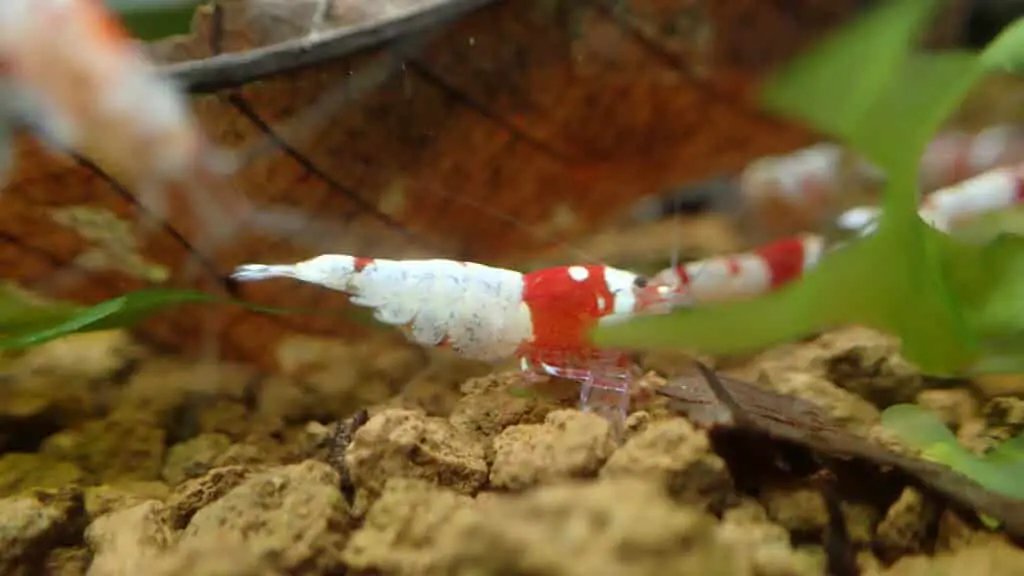
Providing a Nutritious Diet to Support Breeding
A balanced and nutritious diet is crucial for Crystal Red Shrimp breeding success. A proper diet not only promotes healthy growth and development but also provides the necessary nutrients to support breeding and reproduction. Here are some dietary tips for supporting Bee Shrimp breeding.
Protein is an essential component of a healthy and nutritious shrimp diet. Protein-rich foods such as shrimp pellets, brine shrimp , and bloodworms can provide the necessary amino acids for healthy growth and reproduction. A protein-rich diet can also help support egg development and increase the chances of successful breeding.
, and bloodworms can provide the necessary amino acids for healthy growth and reproduction. A protein-rich diet can also help support egg development and increase the chances of successful breeding.
Vegetable-based foods such as algae wafers, spirulina, and kale are also essential components of a nutritious shrimp diet. These foods provide the necessary vitamins and minerals that support shrimp growth, health, and breeding success.
Calcium is crucial for molting and supporting healthy exoskeleton development in Crystal Red Shrimp. Calcium-rich foods such as cuttlebone, eggshells, and mineral supplements can provide the necessary calcium for healthy growth and breeding.
for healthy growth and breeding.
Overfeeding can negatively impact water quality and lead to obesity, which can reduce breeding success in Crystal Red Shrimp. It is essential to feed the shrimp in moderation, providing only the amount of food they can consume within two to three hours.
in moderation, providing only the amount of food they can consume within two to three hours.
Specialized foods such as biofilm, chlorella, and other supplements can provide the necessary nutrients for supporting breeding and reproduction. These foods can help promote healthy egg development and support the overall health of the shrimp.
Providing a nutritious and balanced diet is essential for supporting Crystal Red Shrimp breeding success. By offering a varied diet rich in protein, vegetables, calcium, and supplements, hobbyists can support the shrimp’s overall health, growth, and reproductive capabilities.
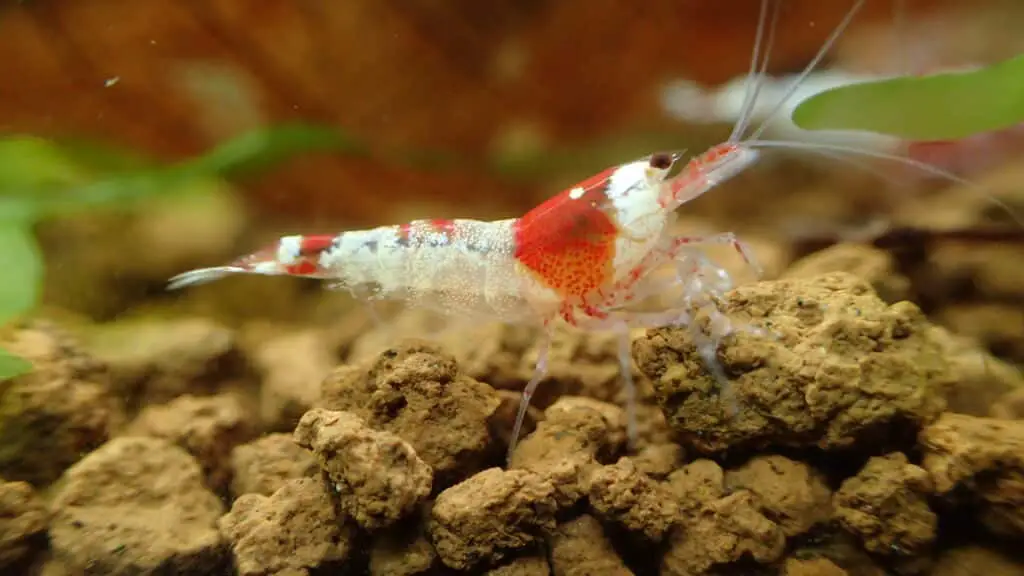
Breeding Tanks: Creating the Perfect Environment
Creating an ideal breeding environment is crucial for successful Crystal Red Shrimp breeding. Breeding tanks must provide the optimal conditions for shrimp to thrive, breed, and produce healthy offspring. Here are some tips for creating the perfect breeding tank environment.
The size of the breeding tank is essential for the health and well-being of the shrimp. A minimum of 5 to 10 gallons is recommended for breeding pairs or small groups of Crystal Red Shrimp. Larger tanks can provide more space for the shrimp to explore and reduce the risk of overcrowding and stress.
Filtration is crucial for maintaining excellent water quality and reducing the risk of harmful waste build-up. A sponge filter is recommended for breeding tanks as it provides gentle water flow and does not harm the delicate shrimp or their offspring.
Substrate such as sand, gravel, or aquatic soil can provide a natural and comfortable environment for Crystal Red Shrimp to explore and forage. However, it is essential to choose a substrate that is soft and does not have sharp edges that can harm the shrimp or their offspring.
Decorations such as rocks, driftwood, and live plants can provide shelter, hiding places, and food sources for Crystal Red Shrimp. Live plants can also help maintain water quality by absorbing waste and providing oxygen for the shrimp.
Lighting is essential for the growth of live plants and the overall health of the shrimp. A low to moderate light setting for 8 to 10 hours per day is recommended for breeding tanks. It is crucial to avoid high-intensity lighting as it can cause stress and harm the delicate shrimp.
Creating a perfect breeding tank environment for Crystal Red Shrimp is crucial for successful breeding and the health of the shrimp and their offspring. By providing a spacious tank with the right filtration, substrate, decorations, and lighting, hobbyists can create an ideal environment for their shrimp to thrive and reproduce.
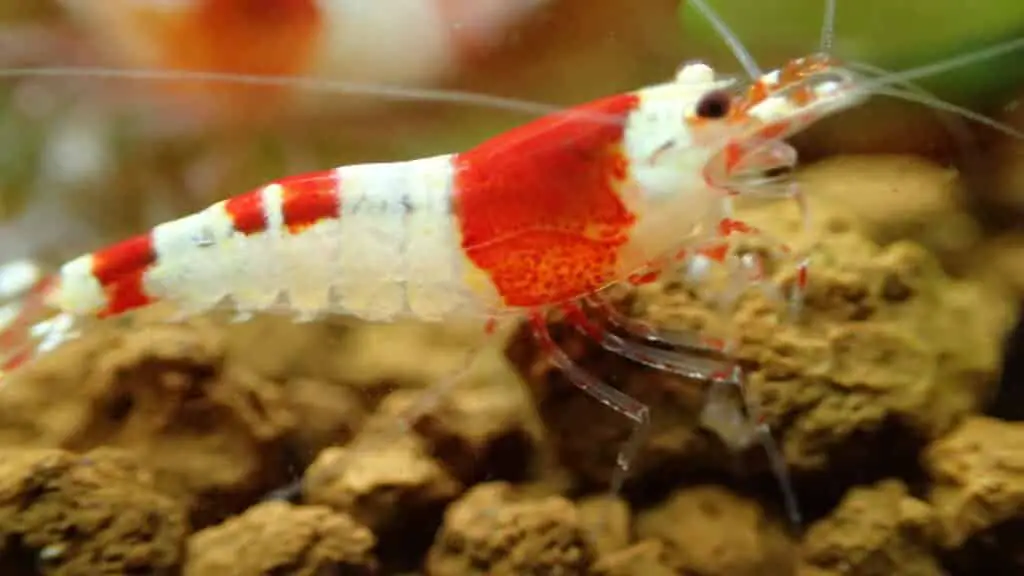
Mating Behavior and Gestation Period
Crystal Red Shrimp exhibit unique and fascinating mating behavior, which leads to successful reproduction and the growth of their offspring. Understanding the mating behavior and gestation period of Crystal Red Shrimp is crucial for hobbyists looking to breed these fascinating creatures.
Mating behavior in Crystal Red Shrimp is quite elaborate and intricate. The male shrimp actively pursue the female, often waving their claws and antennae in an attempt to get her attention. Once the male has caught the female’s attention, they will begin a mating dance, which involves the male depositing sperm packets called spermatophores on the substrate. The female will then collect the spermatophore and use it to fertilize her eggs.
After fertilization, the female Crystal Red Shrimp carries the eggs in her swimmerets for approximately 3 to 4 weeks, depending on water temperature and other environmental factors. During this gestation period, the eggs gradually develop into tiny shrimp. The female will continue to carry the eggs until they hatch into shrimplets.
During the gestation period, the eggs will undergo several stages of development, which can be observed by hobbyists with a keen eye. Initially, the eggs will appear as small white dots, but over time, they will darken and become more distinct. When the eggs are near hatching, they will turn a deep black color.
Once the eggs have fully developed, they will hatch into tiny shrimplets. The hatching process can take several hours, and the shrimplets will emerge from the eggs and immediately begin exploring their environment and feeding on biofilm and other food sources.
Understanding the mating behavior and gestation period of Crystal Red Shrimp is crucial for hobbyists looking to breed these fascinating creatures. By providing a suitable environment, nutritious diet, and stable water conditions, hobbyists can support the shrimp’s reproductive success and enjoy watching their population thrive.

Shrimp Care for Crystal Shrimp Babies
Caring for Crystal Red Shrimp fry (baby shrimp) requires attention to detail and a gentle touch. The fragile offspring require specialized care to ensure healthy growth and development. Here are some tips for caring for Crystal Red Shrimp fry.
It is recommended to separate the shrimpletes from adult shrimp if you want them to grow faster, I normally do this once the shrimp get over 1cm in size.
A separate breeding or nursery tank with stable water parameters and proper filtration is ideal for caring for the shrimps
Providing nutritious and protein-rich food is crucial for supporting the healthy growth and development of Crystal Red Shrimp fry. Offer specialized fry food or crushed adult food, such as shrimp pellets or bloodworms, to ensure that the fry have access to the necessary nutrients.
Regular water changes are essential for maintaining excellent water quality for the fragile shrimp fry. Small, frequent water changes are recommended to avoid stressing the shrimp and disrupting the delicate balance of the tank environment.
Shrimplet are fragile and require gentle handling to avoid causing harm or stress. Use a turkey baster or a gentle siphon to clean the tank, and avoid touching the fry with bare hands or tools.
Regular monitoring of the fry’s behavior, growth, and water parameters is crucial for ensuring that they are healthy and thriving. Look for signs of stress, illness, or deformities, and adjust the care as necessary.
Caring for Crystal Red Shrimp fry requires attention to detail and specialized care to ensure healthy growth and development. By providing the right environment, food, water quality, and handling, hobbyists can enjoy watching their shrimp fry thrive and grow into healthy adult shrimp.

Common Breeding Challenges and Solutions
Breeding Crystal Red Shrimp can be a rewarding and fascinating experience, but it can also come with its challenges. Here are some common breeding challenges and solutions for Crystal Red Shrimp.
Low breeding success is a common issue that can arise when breeding Crystal Red Shrimp. This can be caused by various factors, including poor water quality, unsuitable tank conditions, or incompatible breeding pairs.
One common cause of low breeding success is poor water quality. Crystal Red Shrimp are sensitive to changes in water parameters, and water that is too acidic, too hard, or too soft can negatively impact breeding success. To improve breeding success, hobbyists should regularly test the water parameters and maintain optimal levels of pH, temperature, GH, and KH.
In addition to water quality, providing a balanced diet is essential for breeding success. A diet that is rich in protein, vegetables, and minerals, such as calcium, is important for the health and vitality of the breeding pairs. Providing specialized fry food or crushed adult food, such as shrimp pellets or bloodworms, can ensure that the fry have access to the necessary nutrients to grow and develop properly.
Molting is a natural process that occurs in all shrimp species, including Crystal Red Shrimp. During molting, the shrimp shed their old exoskeleton and grow a new one. Molting problems can occur when the shrimp have difficulty shedding their old exoskeleton, leading to deformities or even death.
There are several factors that can cause molting problems in Crystal Red Shrimp. Poor water quality, especially low calcium levels, can make it difficult for shrimp to molt properly. Inadequate nutrition or a lack of minerals, such as magnesium and potassium, can also lead to molting problems.
To prevent molting problems, it is important to ensure that the water parameters are stable and that the shrimp have access to sufficient calcium and other essential minerals. Adding a calcium supplement or mineral supplement to the tank can help ensure that the shrimp have access to the necessary minerals. It is also important to feed the shrimp a balanced and nutritious diet that includes protein, vegetables, and other essential nutrients.
Molting problems can be a serious issue for Crystal Red Shrimp, as they can lead to deformities and even death. By maintaining optimal water quality and providing the shrimp with the necessary nutrients, hobbyists can help ensure that their Crystal Red Shrimp can molt properly and stay healthy.
To improve hatch rates, it is essential to ensure that the water quality is optimal, and the breeding pairs are compatible with high-quality genetics. Water quality can affect the development of eggs and fry, and suboptimal conditions can lead to deformities or death of the embryos. It is crucial to maintain stable and healthy water conditions by performing regular water changes, monitoring and adjusting the pH, temperature, and GH levels.
Furthermore, providing the breeding pairs with a nutritious and balanced diet is essential for achieving good hatch rates. Shrimp that are well-fed and have access to the necessary nutrients, such as calcium, have better chances of hatching their eggs successfully. Specialized fry food or crushed adult food, such as shrimp pellets or bloodworms, can provide the necessary nutrients to the breeding pairs and improve their chances of producing healthy offspring.
Breeding Crystal Red Shrimp can come with challenges, but with careful attention to water quality, tank conditions, and nutrition, hobbyists can successfully breed these fascinating creatures. By addressing common breeding challenges promptly and effectively, hobbyists can enjoy watching their shrimp thrive and reproduce.
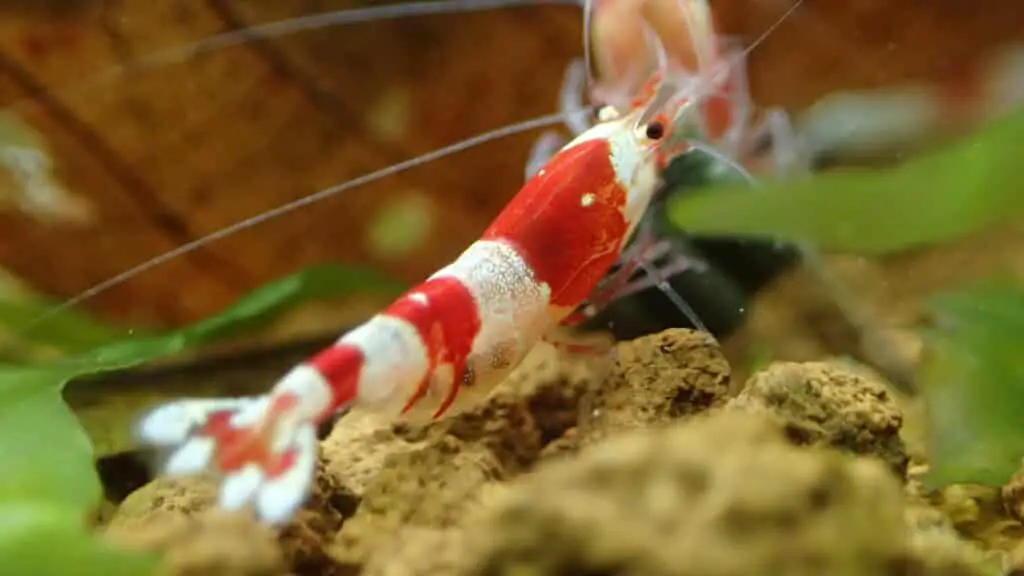
Selective Breeding: Enhancing Coloration and Patterns
Selective breeding is a popular technique used by Crystal Red Shrimp enthusiasts to enhance the coloration and patterns of their shrimp population. With careful selection and breeding, hobbyists can develop and maintain a thriving population of Crystal Red Shrimp with unique and desirable coloration and patterns.
Understanding the basic principles of genetics is crucial for successful selective breeding. Crystal Red Shrimp coloration and patterns are determined by multiple genes, and it is essential to select breeding pairs with the desired genetic traits to enhance the offspring’s coloration and patterns.
Selecting breeding pairs with desirable coloration and patterns is the first step in selective breeding. Choose high-quality shrimp with intense red and white coloration, and distinct patterns such as solid, spotted, or striped. Avoid breeding shrimp with undesirable traits, such as faded coloration or weak patterns.
Breeding and culling are essential components of selective breeding. Breed only the highest quality shrimp to maintain desirable genetic traits and cull any offspring with undesirable traits. This process ensures that the genetic traits of the population remain stable and desirable over time.
Selective breeding is a long and time-consuming process that requires patience and dedication. It can take several generations of breeding to develop and maintain desirable coloration and patterns. It is essential to monitor the breeding pairs closely and adjust the breeding program as necessary to achieve the desired results.
Selective breeding is a popular technique used by Crystal Red Shrimp enthusiasts to enhance the coloration and patterns of their shrimp population. By understanding genetics, selecting breeding pairs carefully, and breeding and culling with patience and time, hobbyists can develop and maintain a thriving population of Crystal Red Shrimp with unique and desirable coloration and patterns.
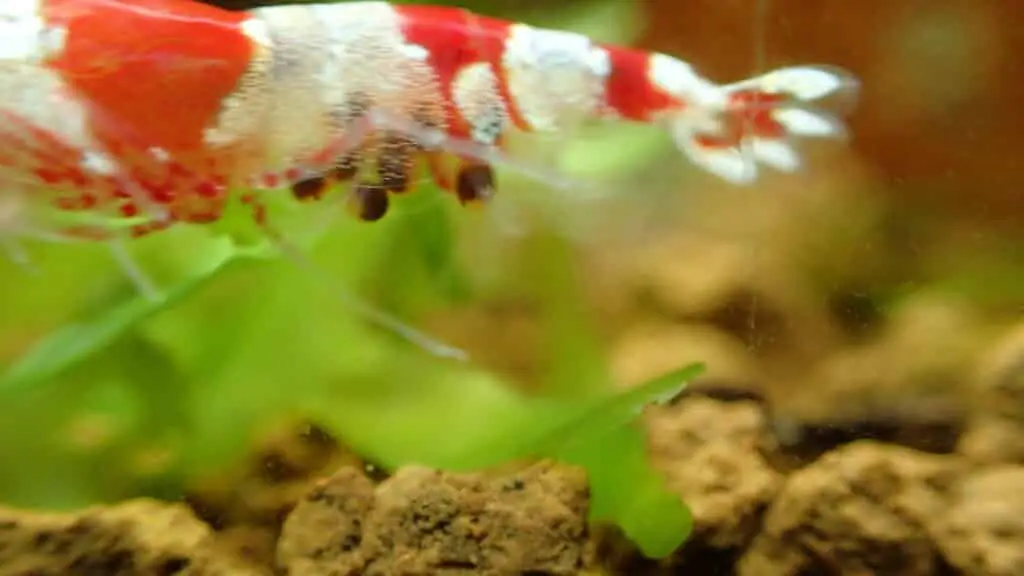
Conclusion
Understanding the breeding habits of Crystal Red Shrimp is crucial for hobbyists looking to breed these beautiful creatures. By providing the right environment, diet, and water parameters, you can encourage successful breeding and enjoy the process of watching your shrimp population thrive.
Crystal Red Shrimp Breeding FAQ
- How often do Crystal Red Shrimp breed?
- Crystal Red Shrimp can breed every 30-45 days under optimal conditions.
- What are the ideal water parameters for breeding Crystal Red Shrimp?
- The ideal water parameters for breeding Crystal Red Shrimp are pH between 6.2 to 6.8, temperature between 75-80°F, and GH between 4-6.
- How do I select breeding pairs for selective breeding?
- Choose high-quality shrimp with intense red and white coloration, and distinct patterns such as solid, spotted, or striped. Avoid breeding shrimp with undesirable traits, such as faded coloration or weak patterns.
- What should I feed Crystal Red Shrimp to support breeding?
- A balanced and nutritious diet, rich in protein, vegetables, and calcium, is crucial for supporting Crystal Red Shrimp breeding success. Offer specialized fry food or crushed adult food, such as shrimp pellets or bloodworms, to ensure that the fry have access to the necessary nutrients.
- How do I care for Crystal Red Shrimp fry?
- Caring for Crystal Red Shrimp fry requires attention to detail and a gentle touch. Provide nutritious food, regular water changes, and separate them from adult shrimp to ensure their survival.
- What are common breeding challenges, and how can I address them?
- Common breeding challenges include low breeding success, molting problems, egg fungus, poor hatch rates, and predation. Address these issues by ensuring optimal water quality, selecting high-quality breeding pairs, and separating the fry from adult shrimp.
- Can I breed Crystal Red Shrimp with other types of shrimp?
- It is generally not recommended to breed Crystal Red Shrimp with other types of shrimp as it can lead to hybridization and the loss of desirable genetic traits.
- How long does the gestation period for Crystal Red Shrimp last?
- The gestation period for Crystal Red Shrimp lasts approximately 2 to 4 weeks, depending on water temperature and other environmental factors.
- Can I breed Crystal Red Shrimp in a community tank?
- It is possible to breed Crystal Red Shrimp in a community tank, but it can be challenging due to predation and other factors. A separate breeding or nursery tank is recommended for the best breeding success.
- How can I enhance the coloration and patterns of Crystal Red Shrimp through selective breeding?
- Understand genetics, select high-quality breeding pairs, breed and cull carefully, and be patient to achieve desirable coloration and patterns in Crystal Red Shrimp.
